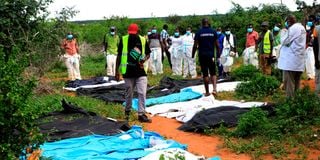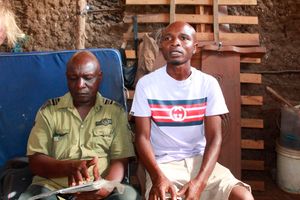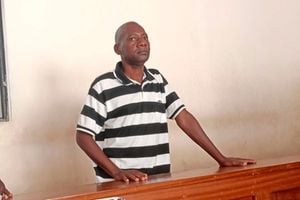
Bodies exhumed at Shakahola Forest being loaded to a Police Van in this photo taken on May 13, 2023.
Should the state decide to have a mass burial for some Shakahola cult massacre victims, their DNA profiles will be stored in case their families show up later looking for them.
This was revealed by chief government pathologist Dr Johansen Oduor, who said the bodies must be traceable in case the government decides to bury them if families do not show up.
Speaking at the Malindi sub-County Hospital where about 429 bodies were preserved, Dr Oduor added that the situation is yet to reach that point at the moment.
"In the event that there will be bodies that can't be identified or difficulty in tracing relatives, we will look for a way of having them disposed of but in a way that is traceable," he said.
Dr Oduor explained that such bodies will be buried in marked graves and their DNA profiles stored at the government chemist
"In the event, someone comes later and their DNA sample is taken, it can be matched and an exhumation done," he said.
Dr Oduor said State agencies will meet later in the week to identify any challenges that may derail the process of identifying all the bodies.
This was in response to whether there is a shortage of reagents as alleged by human rights organisations.
He however added that one of the challenges they've experienced so far is that some families are unwilling to provide DNA samples.
"Some families are unwilling to give samples for DNA profiling. Bodies can be taken for DNA but there are challenges like cultural and other families deciding not to be associated with these people at all," he said.
Sources within the investigations team said, if a mass burial will happen, it will be done in accordance to international standards whereby each body will be marked and placed some metres apart from each other.
According to a senior investigator at the DCI who is conversant with the practice, one mass grave will be dug but there will be conspicuous beacons about four metres apart from one end to the other.
It is within this space that each body in a body bag will be placed.
"All the bodies will have aluminum tags with identities that are unique numbers showing when and where they had been exhumed," said the investigator who cannot be named for lacking authority to comment on the matter.
According to the sleuth, aluminum tags are used because they can stay for many years without the inscribed details fading off.
The details on the tag will be the same that will be inscribed on a numbered list on a monument at the grave.
Should a family show up and their DNA matches with any of the bodies, it will therefore be easy to identify the exact space in which the body was buried.
The government had earlier on indicated the possibility of acquiring a section of the Chakama ranch within Shakahola forest for erecting a monument.






